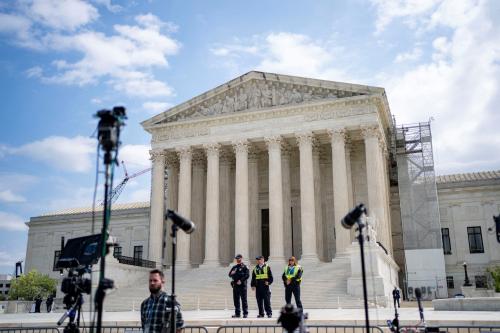When news broke that immigration officials belatedly mailed student visas for two of the New York City terrorists to the flight school that trained them, Immigration and Naturalization Service (INS) commissioner James W. Ziglar immediately promised to fix the agency’s communications problems once and for all.
If Ziglar really wants to know what’s wrong at his agency—or, in fact, with the federal government’s entire executive branch—he needs only to open the INS phone book and start dialing.
He should start by interrogating his chief of staff, his director of the executive secretariat, the deputy commissioner’s office and the counselor to the deputy commissioner. He probably already has talked to his new executive associate commissioner for field operations, but he should still call his assistant deputy executive associate commissioner for immigration services, his deputy executive associate commissioner for enforcement, deputy associate commissioner for investigations, and the long list of associate commissioners, assistant commissioners and deputy assistant commissioners that help manage the INS. After debriefing his headquarters, he can work down through the division chiefs, bureau directors and branch chiefs, then move onto ACS Inc., the contractor that oversees the workers who mailed Mohammed Atta’s student visa.
INS not alone
Alternatively, Ziglar could begin calling up the Justice Department hierarchy to the attorney general for advice. That would require dozens of calls through the thicket of political and career executives interposed between INS and the top of its parent department. Ziglar would have to get through the associate attorney general, eight associate deputy attorneys general, one principal deputy attorney general, the chief of staff to the deputy attorney general and the deputy attorney general himself before working past the deputy chief of staff, chief of staff and assistant to the attorney general.
The more Ziglar lets his fingers do the walking, the more management layers he will uncover. He is at least six layers from the top of his department and 12 from the bottom of his agency. When I counted every last layer in the agency a decade ago, policy direction passed through 65 people on the way down to each immigration inspector, while budget requests passed up through 62.
In such an overlayered hierarchy, Ziglar could not prevent a communications breakdown no matter how hard he tried. His problem, however, is not unfamiliar in government. It was the central cause of the taxpayer abuse at the Internal Revenue Service in 1997, the security breakdowns at the Department of Energy in 1999 and the lack of communication among a host of agencies before Sept. 11.
Ax the hierarchy
Neither Ziglar nor Congress can solve this problem one agency at a time. Rather, an ax needs to be taken to the entire super-structure of government. President Bush started the effort last spring, when the White House ordered every federal agency to prepare a “restructuring plan” designed to “flatten the federal hierarchy, increase the span of control, reduce the time it takes to make decisions and reduce the number of layers in government.”
The order was mostly forgotten after Sept. 11. Moreover, by ignoring political appointees, Bush missed at least a third of the bloat. Political appointees account for a tiny fraction of the total federal workforce, but occupy between a quarter and two-fifths of agencies’ bureaucratic administrative layers, including 41% of the bureaucracy between the president and the INS front lines. Either layers are a problem or they are not.
It is not too late to rescue the Bush effort. Sept. 11 created an obvious urgency, and the president’s homeland security chief, Tom Ridge, has the kind of determination to make such flattening stick. Ridge is supposedly working on proposals to create a new border security agency comprising the INS, the Border Patrol and the Customs Service. It hardly makes sense to bring those agencies together without flattening the bloated hierarchies inside the new agency—and throughout the federal government.



Commentary
Op-edBlame Government Bloat for Immigration Snafus
March 26, 2002